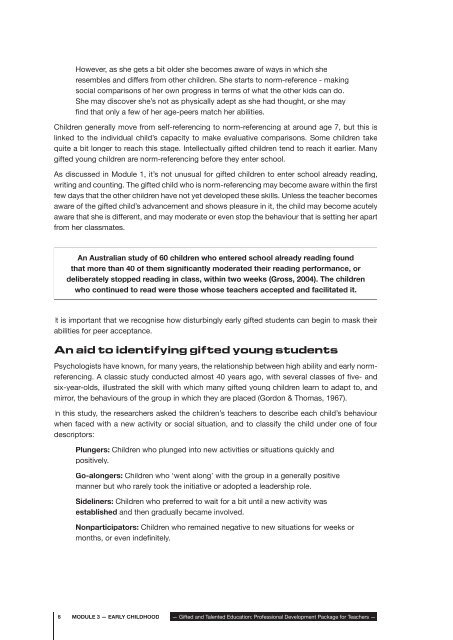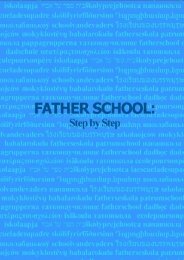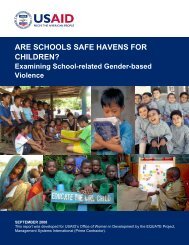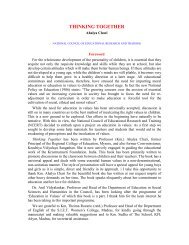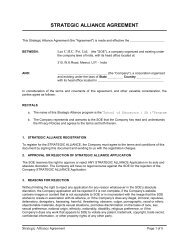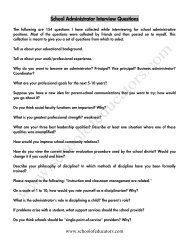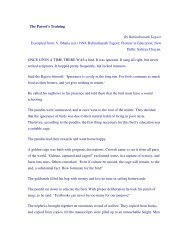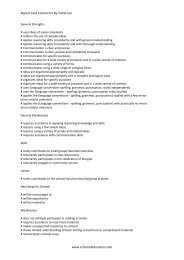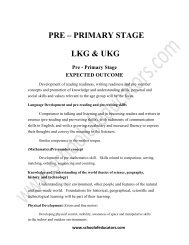Module 3 - School of Educators
Module 3 - School of Educators
Module 3 - School of Educators
- No tags were found...
You also want an ePaper? Increase the reach of your titles
YUMPU automatically turns print PDFs into web optimized ePapers that Google loves.
However, as she gets a bit older she becomes aware <strong>of</strong> ways in which sheresembles and differs from other children. She starts to norm-reference - makingsocial comparisons <strong>of</strong> her own progress in terms <strong>of</strong> what the other kids can do.She may discover she’s not as physically adept as she had thought, or she mayfind that only a few <strong>of</strong> her age-peers match her abilities.Children generally move from self-referencing to norm-referencing at around age 7, but this islinked to the individual child’s capacity to make evaluative comparisons. Some children takequite a bit longer to reach this stage. Intellectually gifted children tend to reach it earlier. Manygifted young children are norm-referencing before they enter school.As discussed in <strong>Module</strong> 1, it’s not unusual for gifted children to enter school already reading,writing and counting. The gifted child who is norm-referencing may become aware within the firstfew days that the other children have not yet developed these skills. Unless the teacher becomesaware <strong>of</strong> the gifted child’s advancement and shows pleasure in it, the child may become acutelyaware that she is different, and may moderate or even stop the behaviour that is setting her apartfrom her classmates.An Australian study <strong>of</strong> 60 children who entered school already reading foundthat more than 40 <strong>of</strong> them significantly moderated their reading performance, ordeliberately stopped reading in class, within two weeks (Gross, 2004). The childrenwho continued to read were those whose teachers accepted and facilitated it.It is important that we recognise how disturbingly early gifted students can begin to mask theirabilities for peer acceptance.An aid to identifying gifted young studentsPsychologists have known, for many years, the relationship between high ability and early normreferencing.A classic study conducted almost 40 years ago, with several classes <strong>of</strong> five- andsix-year-olds, illustrated the skill with which many gifted young children learn to adapt to, andmirror, the behaviours <strong>of</strong> the group in which they are placed (Gordon & Thomas, 1967).In this study, the researchers asked the children’s teachers to describe each child’s behaviourwhen faced with a new activity or social situation, and to classify the child under one <strong>of</strong> fourdescriptors:Plungers: Children who plunged into new activities or situations quickly andpositively.Go-alongers: Children who ‘went along’ with the group in a generally positivemanner but who rarely took the initiative or adopted a leadership role.Sideliners: Children who preferred to wait for a bit until a new activity wasestablished and then gradually became involved.Nonparticipators: Children who remained negative to new situations for weeks ormonths, or even indefinitely.6 MODULE 3 — EARLY CHILDHOOD— Gifted and Talented Education: Pr<strong>of</strong>essional Development Package for Teachers —


